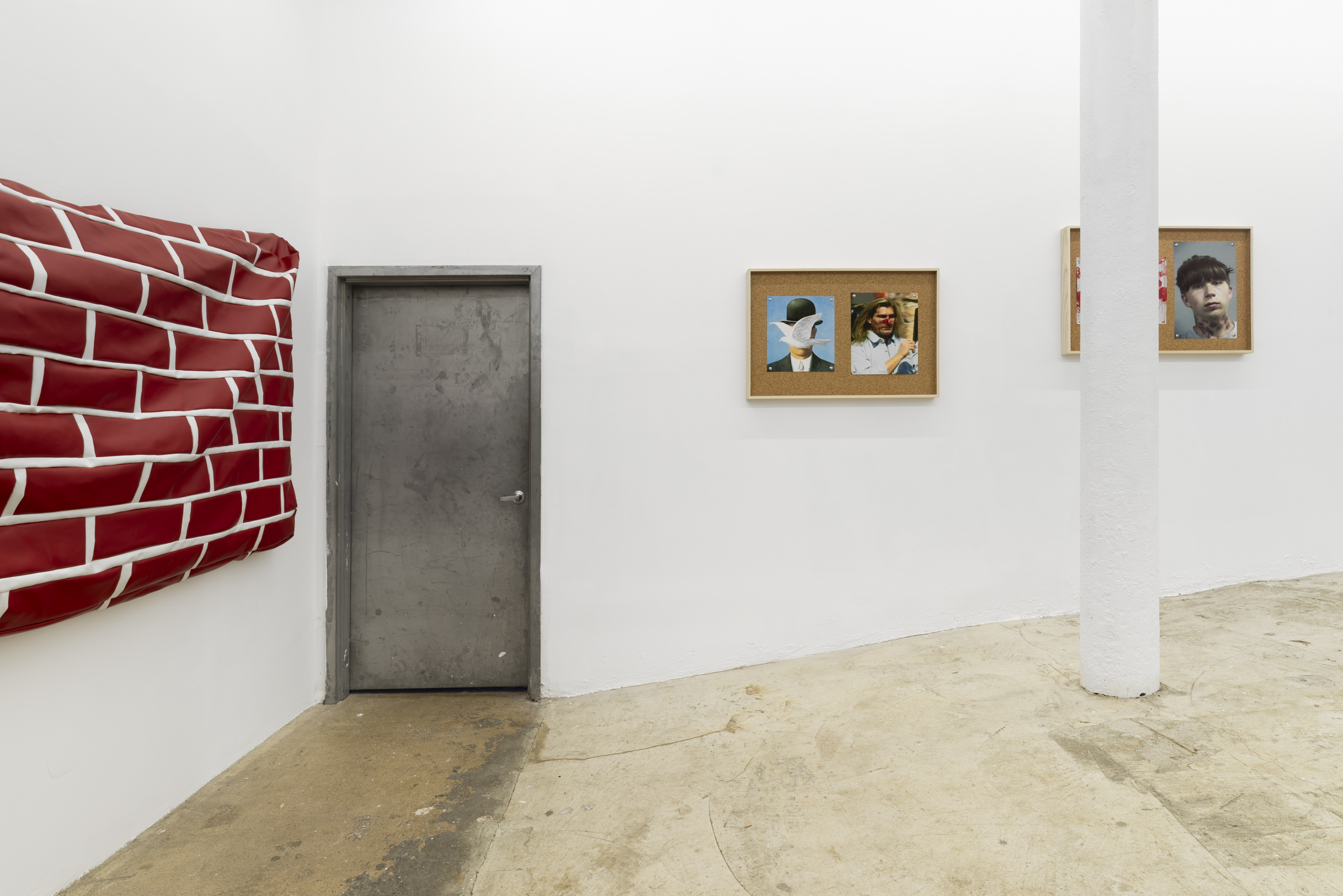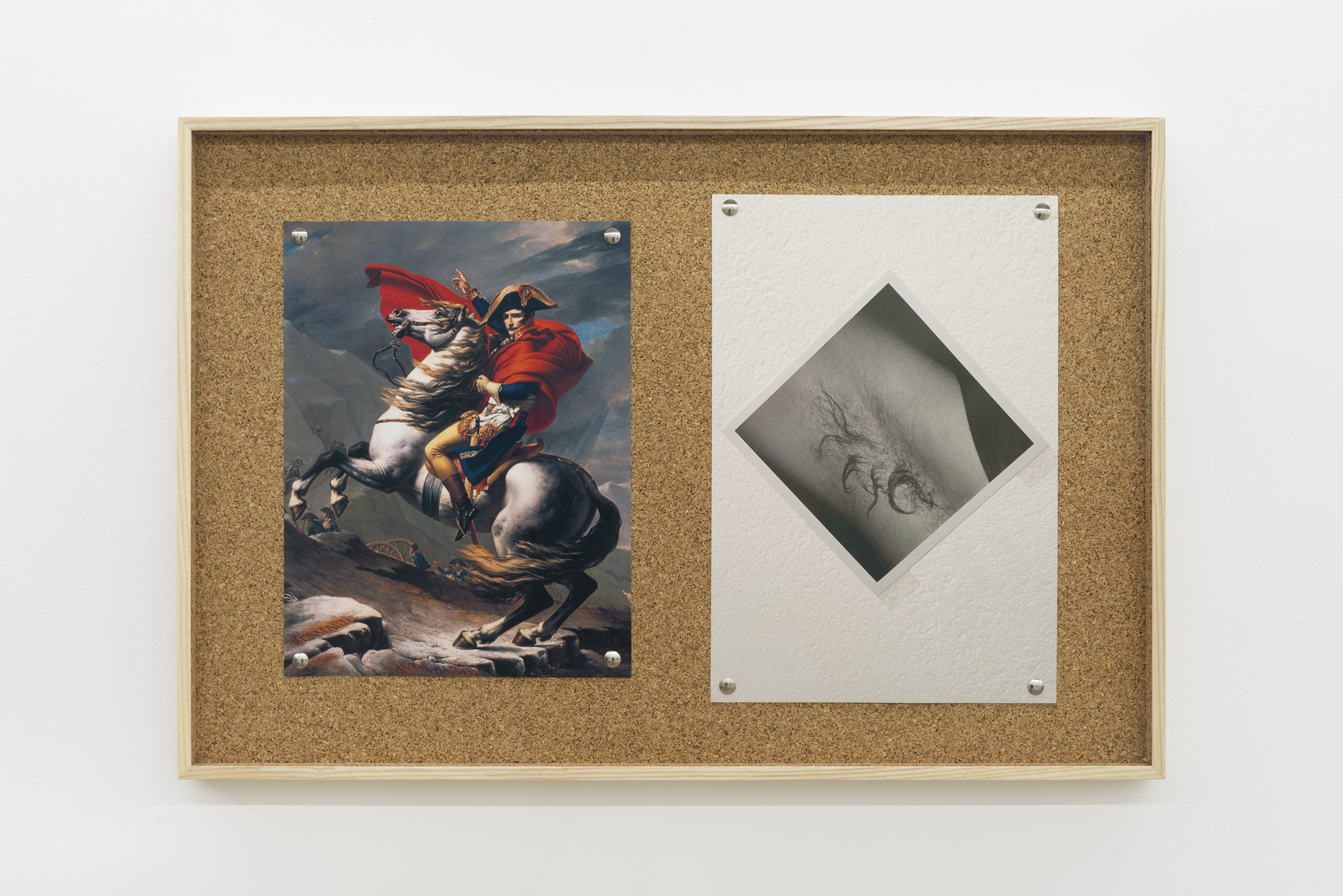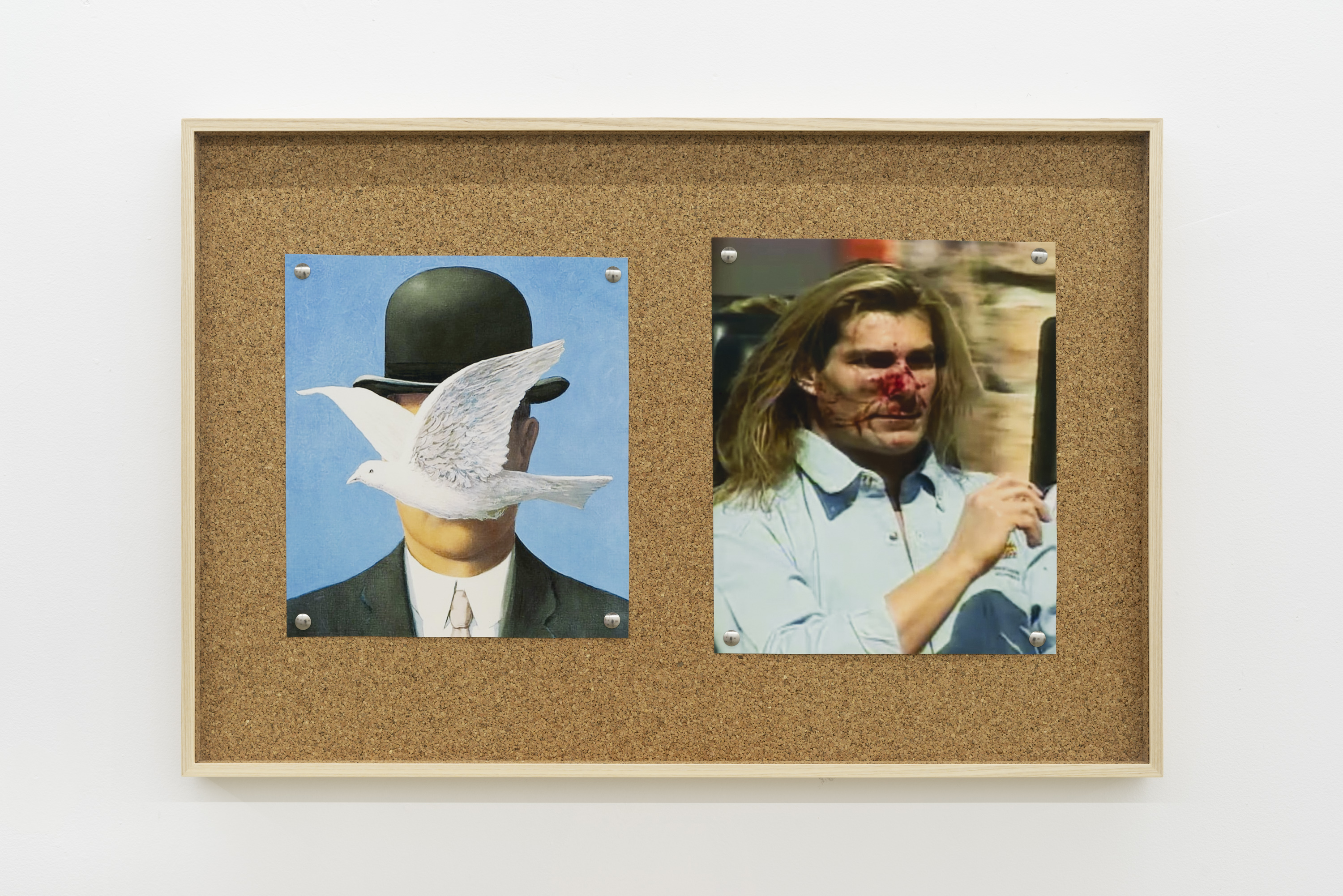Al Freeman
The Kiss
11.2.2024 - 1.19.2025









 Soft Wall; vinyl and polyfill; 50 x 112 x 8 in; 2020.
Soft Wall; vinyl and polyfill; 50 x 112 x 8 in; 2020. Soft Ionic Column; vinyl and polyfill; 105 x 19 x 16 in; 2018.
Soft Ionic Column; vinyl and polyfill; 105 x 19 x 16 in; 2018.
Comparison (Picasso/Model); inkjet prints, cork, thumbtacks, artist frame; 24 1/4 x 36 1/4 x 2 1/4 in; 2024.

Comparison (Wesselman/Flower); inkjet prints, cork, thumbtacks, artist frame; 24 1/4 x 36 1/4 x 2 1/4 in; 2024.

Comparison (David/Tillmans); inkjet prints, cork, thumbtacks, artist frame; 24 1/4 x 36 1/4 x 2 1/4 in; 2024.

Comparison (Barney/Mugshot); inkjet prints, cork, thumbtacks, artist frame; 24 1/4 x 36 1/4 x 2 1/4 in; 2024.
 Comparison (Archimbaldo/VegetableGuy); inkjet prints, cork, thumbtacks, artist frame; 24 1/4 x 36 1/4 x 2 1/4 in; 2024.
Comparison (Archimbaldo/VegetableGuy); inkjet prints, cork, thumbtacks, artist frame; 24 1/4 x 36 1/4 x 2 1/4 in; 2024.
Comparison (Hopkins/Pie); inkjet prints, cork, thumbtacks, artist frame; 24 1/4 x 36 1/4 x 2 1/4 in; 2024.

Comparison (Guston/Lettuce); inkjet prints, cork, thumbtacks, artist frame; 24 1/4 x 36 1/4 x 2 1/4 in; 2024.

Comparison (Titian/Kegstand); inkjet prints, cork, thumbtacks, artist frame; 24 1/4 x 36 1/4 x 2 1/4 in; 2024.

Comparison (Twombly/Hickey); inkjet prints, cork, thumbtacks, artist frame; 24 1/4 x 36 1/4 x 2 1/4 in; 2024.

Comparison (Magritte/Fabio); inkjet prints, cork, thumbtacks, artist frame; 24 1/4 x 36 1/4 x 2 1/4 in; 2024.

Comparison (Riley/Truck); inkjet prints, cork, thumbtacks, artist frame; 24 1/4 x 36 1/4 x 2 1/4 in; 2024.
“Art is art, everything else is everything else.”1
Ad Reinhardt, 1958
Ad Reinhardt, 1958
Across a series of Comparisons, familiar art historical works are positioned alongside aesthetically-similar images taken from recreational web surfing. For the exhibition The Kiss at International Waters, Al Freeman creates a pictorial dialectic that erases distinctions of high and low culture.
Artwork no longer exists as “a reality in its own right”2, “a self-contained universe”3, “autonomous and self-referential”4. As images circulate, they are experienced in relation to one another. These connections interfere with a viewer's ability to see an image as independent. The more images are shared, the greater this interference becomes. For any artwork to be experienced in isolation, it would have to transcend its endless series of interconnections. Rather than an artwork existing as if it were a self-contained reality, each work instead functions as a system of relations. For each work, a polyphony of related content exists as a preconditional reality.
In Freeman’s Comparisons, the interface of a cork board frames two symmetrical images in collaged heteroglossia. In Comparison (Magritte/Fabio), the widely recognized painting “Man in a Bowler Hat” functions as a preamble to a photograph of Fabio’s bloodied face after being struck by a goose on a rollercoaster. Comparison (Picasso/Model) positions a late “Self Portrait” of the artist against a defaced photograph of a model taken from a magazine or plastic surgery mockup. The differentiating hierarchy within Freeman’s comparisons is quickly surpassed by the structural similarities of both images. The subject and composition that the two images have in common call upon a superseding system of relations that images share in general.
Images tacked to the right of each composition reflect a visual culture that reproduces itself across computational networks. These collective media-forms are a participatory expression; as visual artifacts their viral distribution replicates and propagates through imitation. Each image requires a visual simplicity that makes it easy to digest and share. By design, these images mirror the common experiences and emotions of their consumers. Their recognizable structure can be easily modified and reproduced allowing for infinite transmission.
By connecting fratboy humor with art-historical canon, Freeman’s Comparisons level the status of highbrow and lowbrow visual culture which reflects how we encounter our daily content stream. These memetic expressions are a ubiquitous form, and the interpretation of any artwork is inevitably shaped by their omnipotence. By positioning the two forms in direct comparison, the art-historical work is revealed as a memetic form, continuously mobilized and reproduced, with its meaning transforming as it circulates and is shared. The Comparison, as an amalgamation of both pictorial categories, is a subaltern for the dynamics of power and desire embedded within all images.

1. Ad Reinhardt. Art as Art: The Selected Writings of Ad Reinhardt. New York: The New Press, 1991.
2. Leo Steinberg. Other Criteria: Confrontations with Twentieth-Century Art. New York: Oxford University Press, 1972.
3. Michael Fried. Art and Objecthood: Essays and Reviews. Chicago: University of Chicago Press, 1998.
4. Clement Greenberg. "Modernist Painting." In Art and Culture: Critical Essays, 85. Boston: Beacon Press, 1961.


